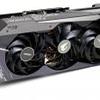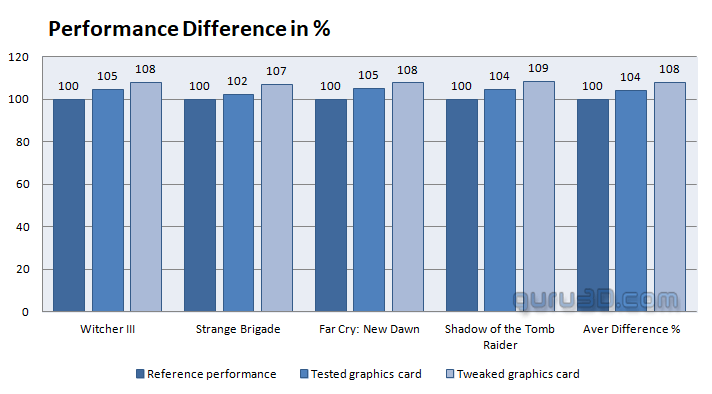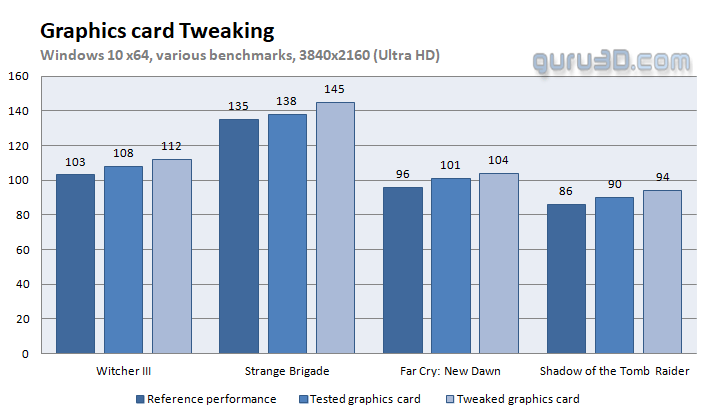Overclocking the graphics card
Overclocking the graphics card
For most graphics cards you can apply a simple series of tricks to boost the overall performance a little. Typically you can tweak the core clock frequencies and voltages. By increasing the frequency of the video card's memory and GPU, we can make the video card increase its calculation clock cycles per second. It sounds hard, but it can really be done in less than a few minutes. I always tend to recommend to novice users and beginners, to not increase the frequency any higher than 5% on the core and memory clock. Example: If your GPU runs at 1500 MHz then I suggest that you don't increase the frequency any higher than 25 MHz increments.
More advanced users push the frequency often way higher. Usually, when your 3D graphics start to show artifacts such as white dots ("snow"), you should back down 25 MHz and leave it at that. Usually, when you are overclocking too hard, it'll start to show artifacts, empty polygons or it will even freeze. Carefully find that limit and then back down at least 25 MHz from the moment you notice an artifact. Look carefully and observe well. I really wouldn't know why you need to overclock today's tested card anyway, but we'll still show it. All in all... you always overclock at your own risk.
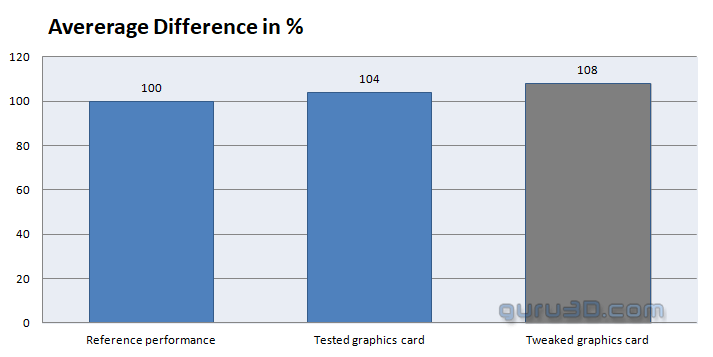 |
||
| Reference frequency | This sample | Overclocked |
| Boost Clock: 1710 MHz | Boost Clock: 1905 MHz | Boost Clock: ~2100 MHz |
| Memory Clock: 19000 MHz | Memory Clock: 19000 MHz | Memory Clock: 21000 MHz |
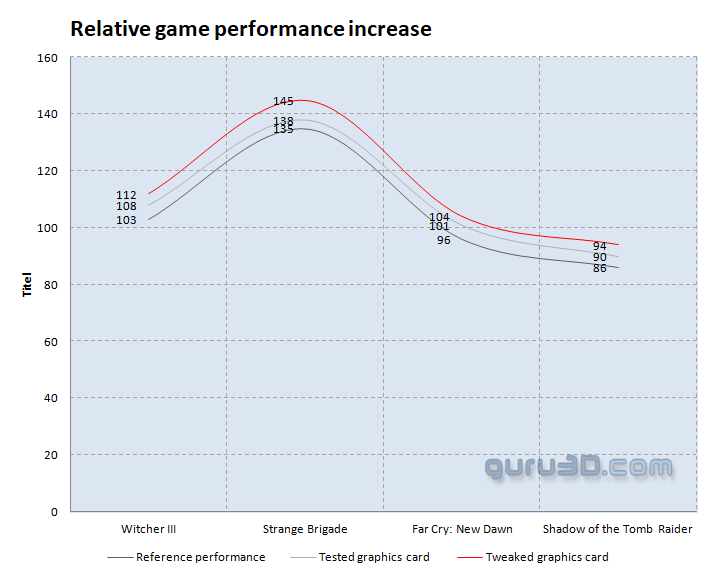 |
||
With AfterBurner (download here) you can tweak the card both manually and with the curve-based OC scanner. You'll see that most cards out there will all tweak to roughly the same levels due to all kinds of hardware protection kicking in. Memory clocks are double-data-rate, thus say 9500 MHz is 19000 Gbps effective.
We applied the following settings in Afterburner:
- Core Voltage +50
- Power Limiter: 100% (already maxed out)
- Clock +100 MHz Dynamic GPU clock end up at ~2100 MHz
- Mem clock +1000 (=21 Gbps effective)
- FAN RPM default
Please note, there is new protection introduced at the memory subsystem, overclocking can result in lower performance. the mechanism detects errors and adapts to them. The positive side effect is that this mechanism prevents crashing. It however makes tweaking memory far more challenging.
The results show respective default clocked results plotted in percentages. To the far right where you can see "Aver Difference %", this is the result of the four games tested and averaged out.
